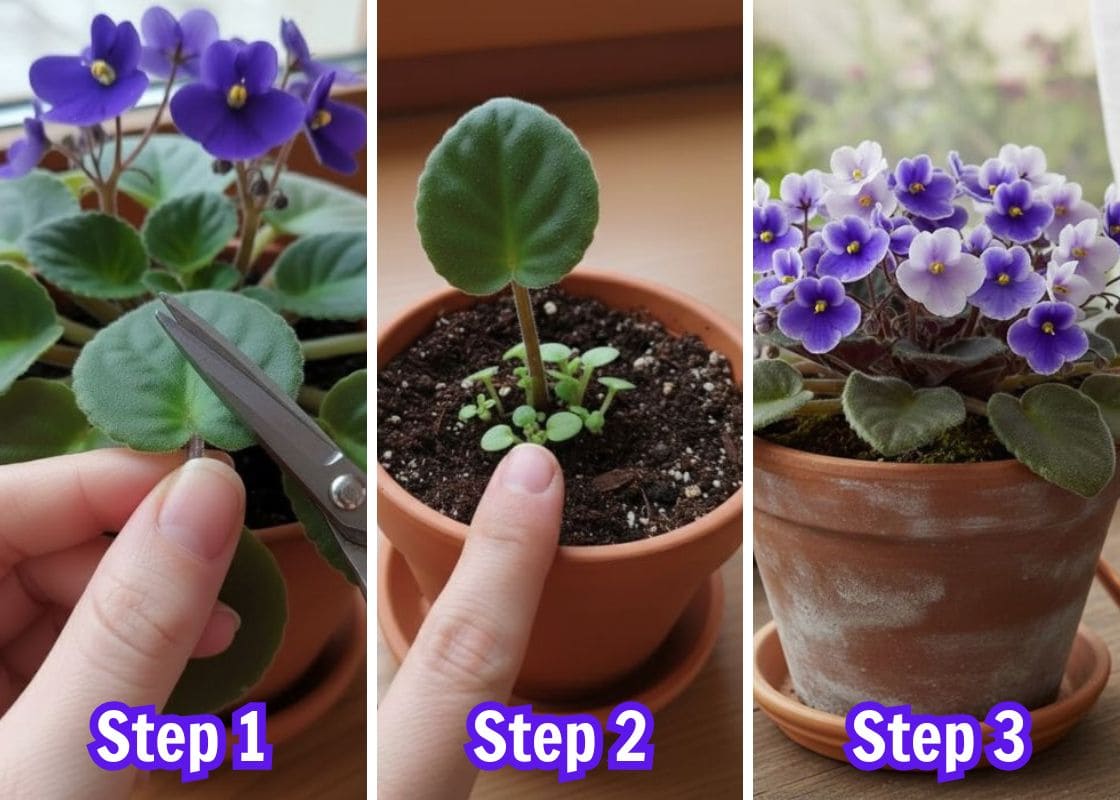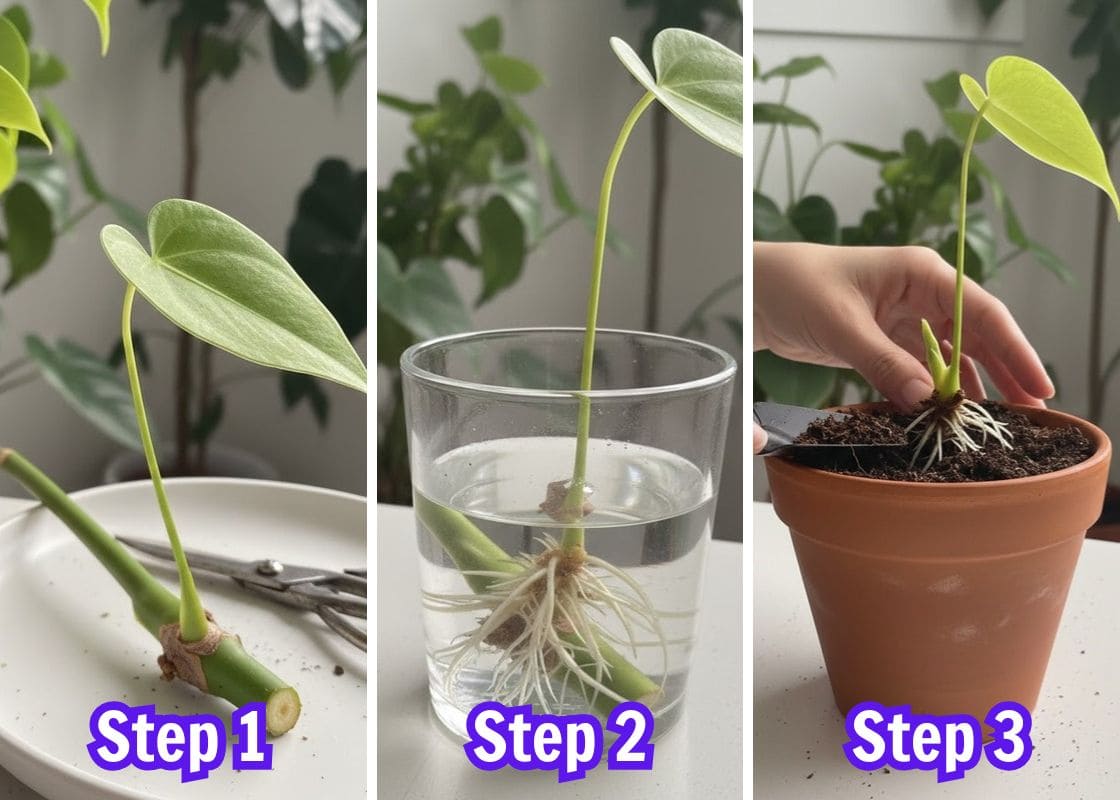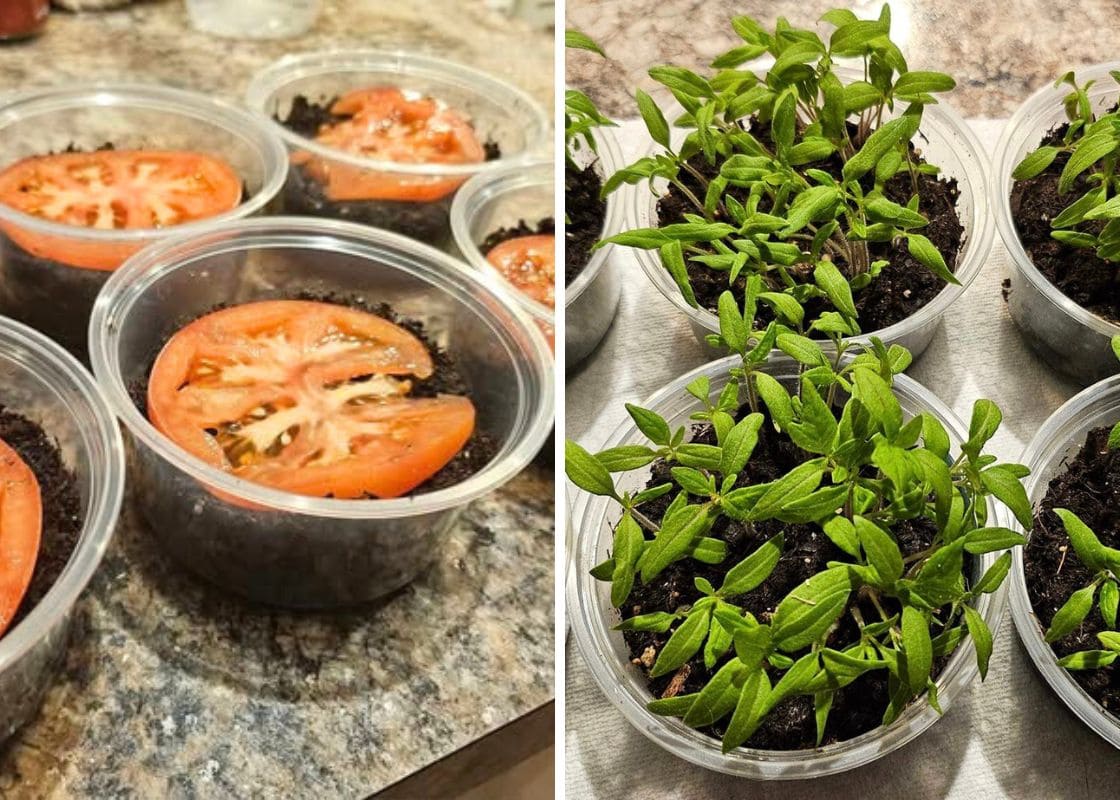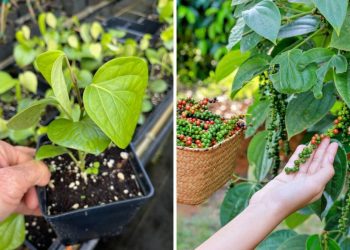As any seasoned gardener will tell you, marigolds are a staple in the garden world.
These cheerful flowers with vibrant shades of yellow, orange, red, and gold are a common sight from spring to fall.
Their popularity isn’t just due to their eye-catching beauty, but also because of their versatility and numerous benefits.
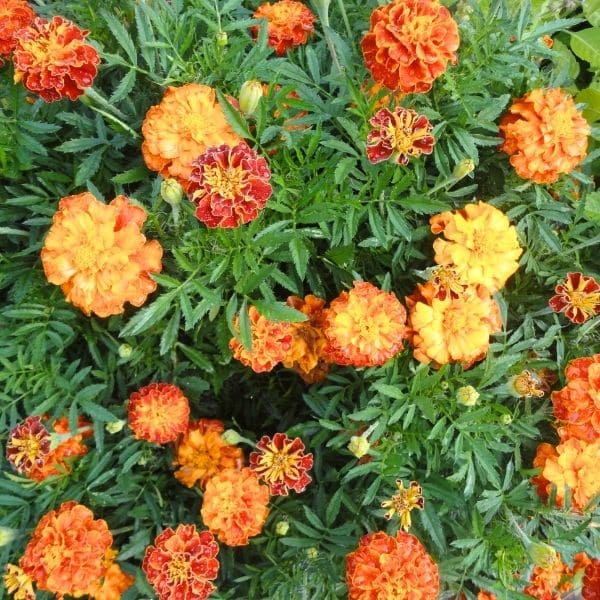
| Scientific name | Tagetes spp. |
| Common names | Marigold, African Marigold, French Marigold, Signet Marigold |
| Family | Asteraceae |
| Plant type | Annual herbs |
| Height | Up to 4 feet |
| Color | Yellow, orange, red, gold |
| Blooming season | Spring to fall |
| Soil requirements | Well-drained, moderately fertile soil |
| Sunlight | Full sun |
| Water requirements | Moderate |
14 Benefits of Marigolds In Garden
Aesthetic Value
Marigolds have vibrant colors ranging from sunny yellows to deep oranges and fiery reds and bring brightness and warmth to any garden space.
These cheerful blooms create a striking contrast against green foliage and other plants making the garden visually appealing.
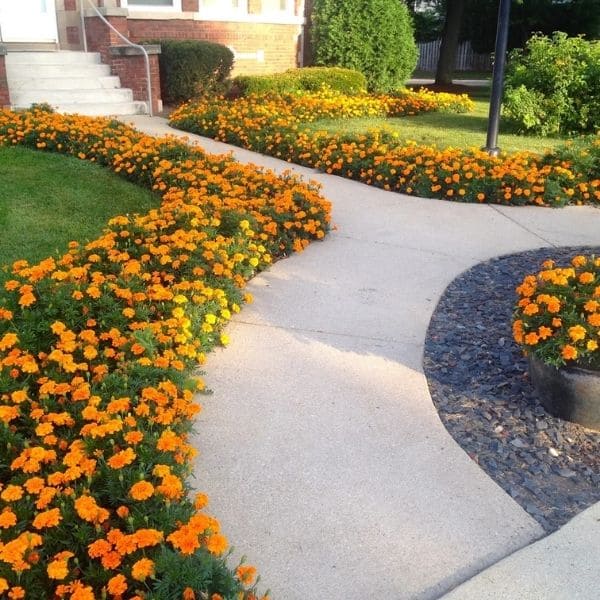
One of the things I love most about marigolds is their versatility in floral arrangements. They make excellent cut flowers so I often cut fresh ones to brighten up my home.
Additionally, marigolds can be dried and used in longer-lasting arrangements.
Their petals retain their color well when dried providing a beautiful option for creating wreaths or potpourri.
Companion Planting and Pests Control
Marigolds can pair with tomatoes, basil, beans, and potatoes to improve their growth and the secret lies in the natural pest-repellent properties of them.
These flowers release compounds like alpha-terthienyl controlling soil-borne nematodes that can damage root systems.
Additionally, the strong scent of marigolds deters harmful insects such as aphids, whiteflies, mosquitoes and tomato hornworms.

Marigolds also play a crucial role in integrated pest management (IPM).
Therefore, you can create a balanced ecosystem where beneficial insects like ladybugs and predatory wasps are attracted.
Against Harmful Nematodes
Nematodes are tiny, thread-like organisms that attack plant roots and lead to stunted growth and reduced yields.
When grown for three to four months, marigolds release alpha-terthienyl through their roots creating a toxic environment for nematodes.
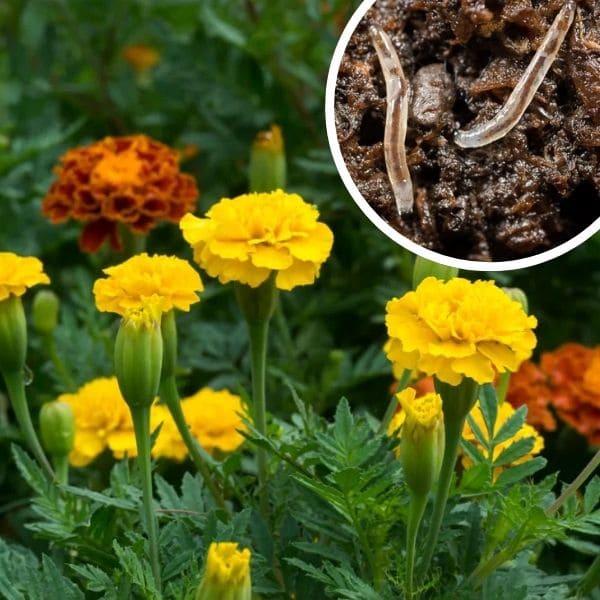
Moreover, you should grow marigolds densely in clusters to enhance their ability to manage nematodes.
Including marigolds in your crop rotation and leaving their roots in the soil at the end of the season can amplify nematode-reducing effects.
Enhancing Soil Health
Marigold’s root exudes including various organic compounds such as terpenoids and flavonoids stimulate beneficial microbial activity in the soil.
Increased microbial activity is crucial as it promotes nutrient cycling, ensuring that essential nutrients like nitrogen, phosphorus, and potassium are available to plants.
At the end of the growing season, its roots will decompose and improve texture and moisture-retention capabilities of the soil.
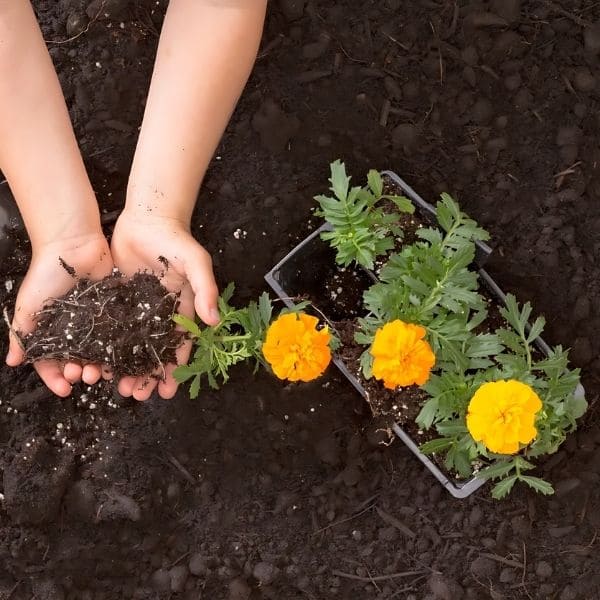
Weed Control
Marigolds have dense, bushy growth habits that effectively shade the soil making it harder for weeds to establish and grow.
Studies have shown that marigolds release allelopathic chemicals which inhibit the germination and growth of certain weed species.

To see the effectiveness of marigolds firsthand, I conducted an experiment in my garden.
I divided my vegetable bed into two parts: one half with marigolds interplanted among the vegetables and the other half without marigolds.
Over the growing season, the section with marigolds had significantly fewer weeds, while the other section required constant weeding.
Attracting Pollinators
Marigolds are like beacons, drawing in bees and butterflies with their rich nectar and pollen.
Also, they have a long blooming season from spring to fall, providing a consistent and reliable food source for these beneficial insects throughout the growing season.

These pollinators increase fruit and vegetable yields. Without them, many plants would struggle to reproduce and bear fruit, for example, cucumbers, squash, and melons.
These plants rely heavily on external pollinators to transfer pollen from flower to flower.
Health Benefits
In both traditional and modern medicine, marigolds are known for their potent anti-inflammatory and antiseptic properties.
Thanks to high levels of flavonoids and triterpenoids, it can help reduce swelling and soothe irritated skin.
Research published in the “Journal of Clinical Medicine” has shown that marigold extract significantly decreases inflammation and promotes wound healing.
In my garden, I often make a homemade marigold salve to treat cuts and scrapes.

Traditionally, marigold has been used to treat various skin conditions like eczema and sunburns.
Even today, herbalists recommend marigold extracts for supporting skin health and aiding in natural healing.
Beyond topical uses, marigolds can be consumed in teas and tinctures providing internal health benefits. They are known to aid digestion and boost the immune system.
Culinary Uses
In salads, marigold petals, particularly those of the Tagetes species, provide a splash of color and a subtle, citrusy taste.
Moreover, marigolds are a good source of antioxidants beneficial for overall health. They also contain lutein and zeaxanthin, compounds known for supporting eye health.
When using marigolds in cooking, it’s important to note that the petals are safe to eat, but the green parts, including the sepals, can be bitter and should be avoided.
Ensure that the marigolds you use are grown organically and are free from pesticides.

Essential Oil Production and Perfumery
Marigolds yield essential oils through the process of steam distillation. The rich, earthy, and slightly fruity fragrance is perfect to create perfumes and scented products.
In aromatherapy, marigold oil is used in diffusers and massage oils due to its anti-inflammatory properties.
I often add a few drops of marigold oil to my diffuser to create a soothing atmosphere at home.

Easy to Grow and Care
You can grow marigolds by sowing the seeds directly into the garden soil after the last frost. I usually prefer starting seeds indoors.
Simply fill seed trays with potting mix, plant the seeds about a quarter-inch deep, and keep the soil moist.
Within a week or two, you’ll see seedlings sprouting and ready to be transplanted outdoors once the weather warms up.
Moreover, marigolds can also be propagated from cuttings. However, I’ve found that growing from seeds is the easiest and most cost-effective way to enjoy these blooms.
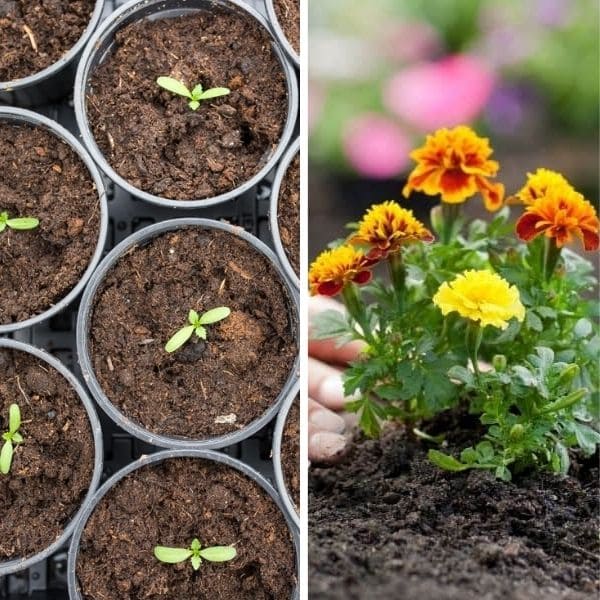
Marigolds thrive in well-drained soil and full sun, tolerating a range of soil types and climates.
Of course, they are resistant to pests. I’ve planted them in different parts of my garden, from beds to borders to containers and they always flourish.
Marigolds are also relatively drought-tolerant, which means you don’t have to worry if you miss a watering session or two.
Just make sure they get regular water, especially during prolonged dry periods, and they will continue to bloom beautifully.
Natural Dyes
The bright yellow and orange petals of marigolds can be transformed into a natural dye to provide a sustainable alternative to synthetic dyes.
You can start experimenting with marigold dyes by collecting the petals first.
Next, simmer the petals in water for about an hour, strain out the plant material, and you’re left with a rich, yellow dye. Then, use this dye to color natural fabrics like cotton and wool.
The hues range from soft, golden yellows to deeper, more intense shades, depending on the concentration of the dye and the fabric used.

Soap Making
Start your DIY project by infusing olive oil with dried marigold petals.
Gently heating the oil and petals together to release the beneficial compounds into the oil. After straining out the petals, this golden oil becomes the base for soap.
In addition, you can mix the infused oil with other natural ingredients like coconut oil, shea butter, and lye to enhance the fragrance and therapeutic properties of the soap.
Once the mixture is combined and poured into molds it takes a few weeks to cure and harden.
Organic Compost
When I first started composting, I included marigold clippings along with other garden waste like vegetable scraps and fallen leaves. They decompose relatively quickly.
Marigolds add vital nutrients back into the soil, including nitrogen, phosphorus, and potassium, which are essential for plant growth.
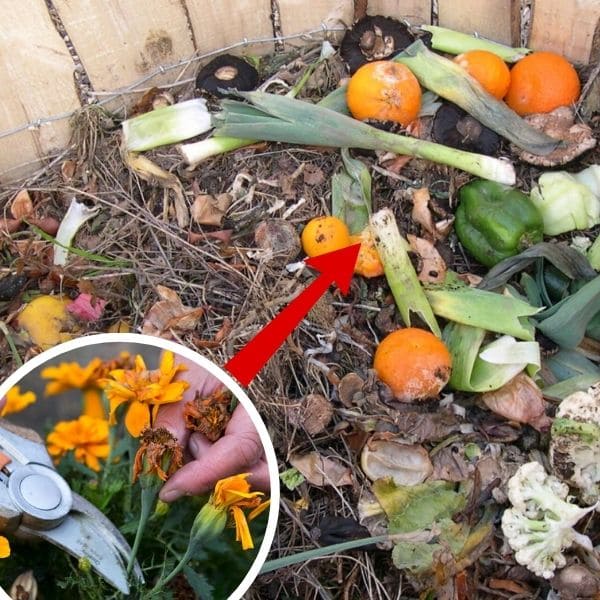
After marigolds have died or reached the end of their blooming season, make sure to collect the spent plants and add them to compost heap.
The natural decomposition of these plants continues to enrich the compost with organic matter and nutrients.
Symbolizing Religious Rituals
In many traditions, marigolds symbolize the sun, representing brightness, positivity, and the cycle of life and death.
For instance, during the Dia de los Muertos celebrations in Mexico, marigolds, known as “cempasuchil,” are used to honor and remember deceased loved ones.
In Hindu rituals, marigolds are widely used in pujas and temple offerings. They are strung into garlands and placed at altars to invoke blessings from the deities.

How to Incorporate Marigolds in Your Garden
There are 3 types of marigold: African, French, and Signet.
African Marigold (Tagetes erecta): These are the tallest marigolds, reaching up to 4 feet. They have large, pom-pom-like blooms in shades of yellow and orange.
These flowers thrive in full sun and well-drained soil. Their height and large flowers are suitable for background planting in borders.
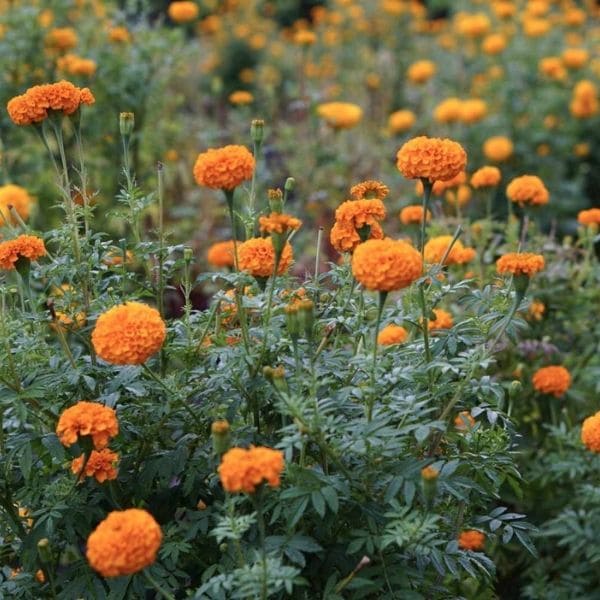
French Marigold (Tagetes patula): These are compact, bushy plants, growing up to 12 inches tall.
They boast vibrant, multi-colored flowers in reds, oranges, and yellows. These flowers are for new gardeners because they flourish with minimal care.
French marigolds are excellent for intercropping with tomatoes and peppers to reduce nematode populations and keep aphids at bay.
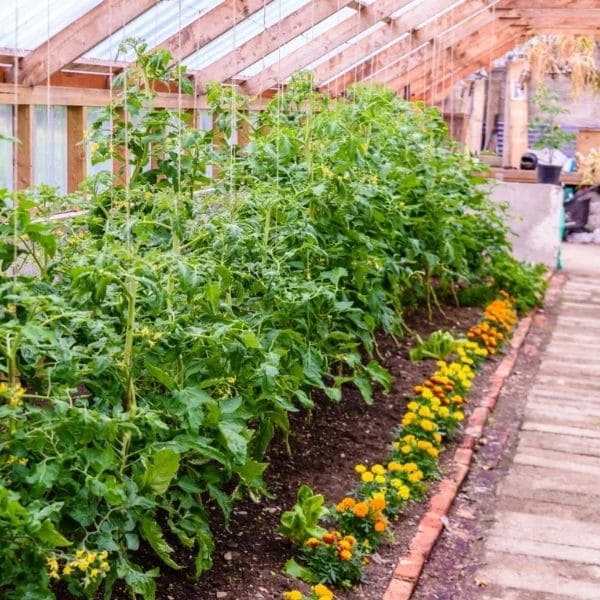
Signet Marigold (Tagetes tenuifolia): These have delicate, lace-like foliage and small, single-petaled flowers. They are easy to grow and are highly drought-tolerant.
I love their citrusy scent and the fact they’re edible. Signet marigolds also thrive in containers, making them a versatile choice for smaller spaces.

FAQs
Can marigolds survive frost?
No. They thrive in warm weather and should be planted after the last frost date in your area. If frost is expected, it’s best to cover your marigolds or bring potted ones indoors.
Are marigolds safe for pets?
Yes. However, some pets may experience mild gastrointestinal upset if they ingest the plant. It’s always best to monitor your pets and discourage them from chewing on garden plants.
Where should I put marigolds in my garden?
Marigolds thrive in full sun and well-drained soil. Plant them in sunny spots around your garden, such as borders, vegetable beds, or containers.
What not to plant with marigolds?
Marigolds should not be planted too close to beans or cabbage family crops like broccoli and cauliflower. They can inhibit the growth of these plants.
Additionally, avoid planting them where their scent might overwhelm the fragrance of more delicate herbs and flowers.


